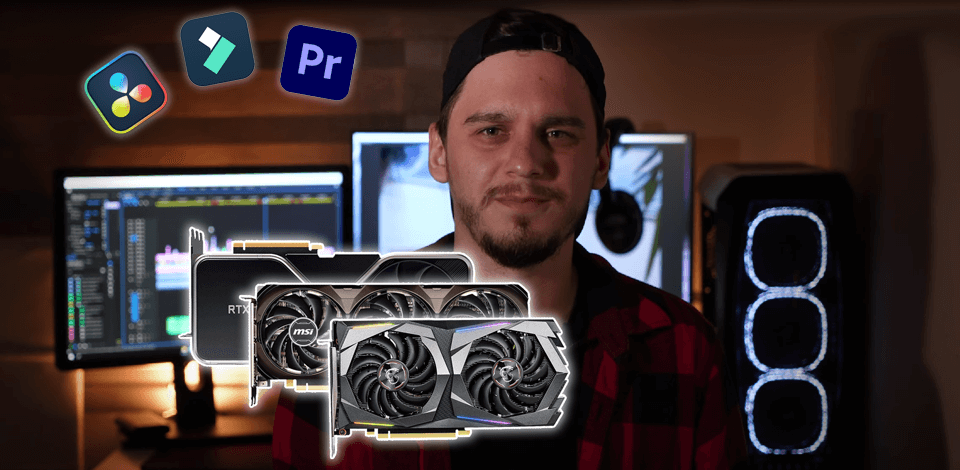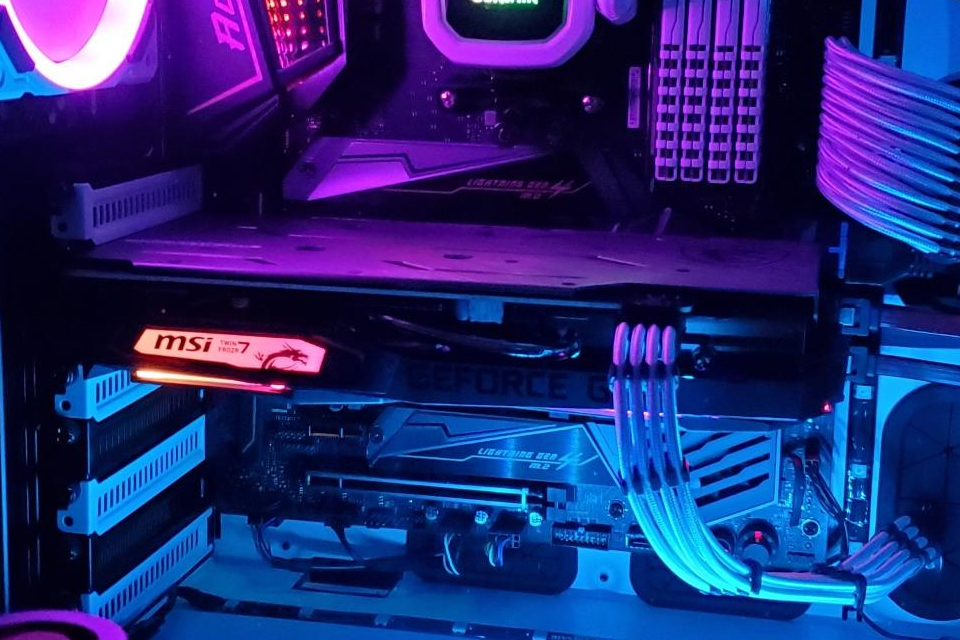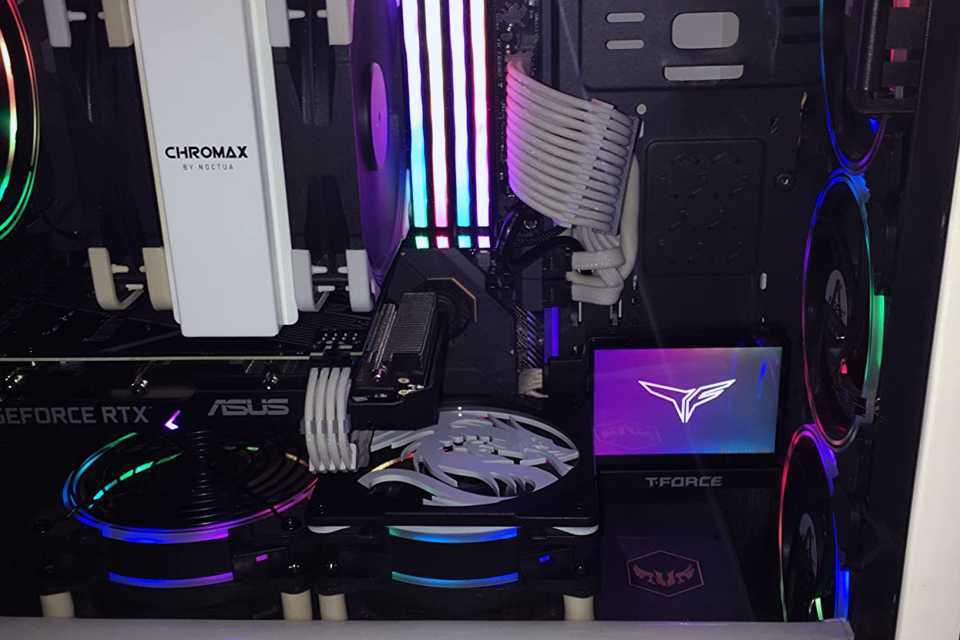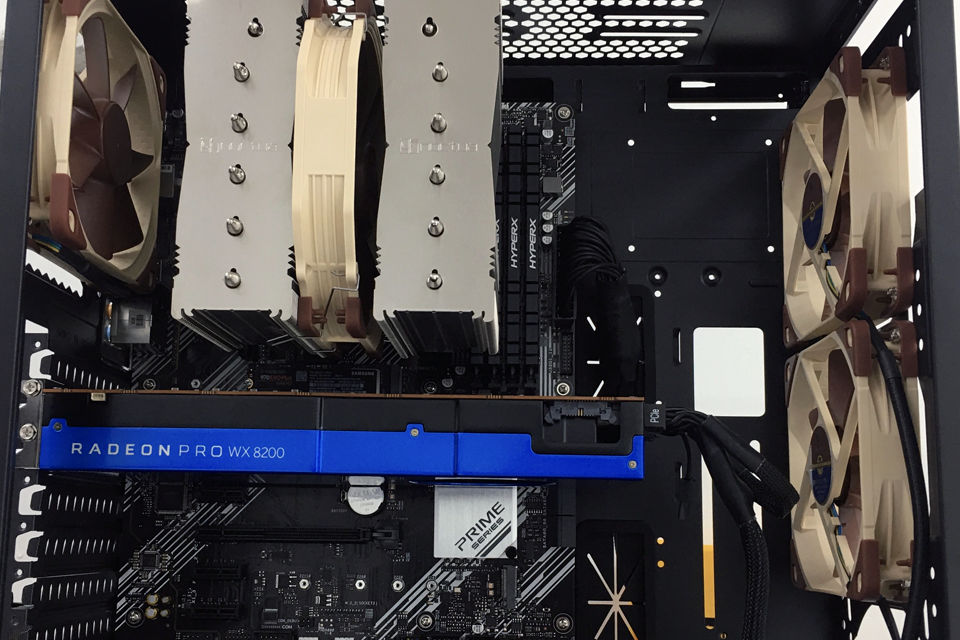
Video editing has always been my passion, but I often faced serious challenges with demanding projects. That’s when I decided to find the best graphics card for video editing by testing the top options on the market.
Slow rendering, delays, and lags during 4K video editing became real obstacles. Every second spent waiting for my computer to process a frame was an ordeal. My goal was to help others discover a graphics card that ensures smooth, uninterrupted performance and enables seamless work with high-quality video without any delays.
This article is the result of my research and hands-on testing of 20+ graphics card for video editing, where I tried out every option in real-world situations. My goal is to share these insights to help every video editor find the perfect graphics card for smooth, efficient, and fast performance.
Amazon: 500+ bought in past month
B&H: 7K+ sold in the past year
Best Buy: 6K+ sold in the past year

The RTX 4070 Ti Super impressed us with its outstanding performance. Tatiana and I quickly recognized its potential when working with high-resolution video. During testing, it handled 4K editing seamlessly and tackled even more challenging tasks, such as processing multiple streams of 4K video with real-time effects, with remarkable ease.
Like other recent NVIDIA models built on the Ada Lovelace architecture, the RTX 4070 Ti Super boasts improved energy efficiency and built-in hardware support for ray tracing, making it a game-changer for modern video editing and graphic effects.
What impressed me most was the card’s support of DLSS (Deep Learning Super Sampling) - a technology that boosts image quality without significantly impacting performance. This makes video editing much smoother and ensures efficient rendering, even at high settings.
Compared to the RTX 3090, the 4070 Ti Super stands out for being significantly lighter and more energy-efficient, which reduces cooling requirements lowering overall energy consumption. As we noticed, most users doing basic projects don’t need a high-powered GPU. If you’re not working with 4K video or complex 3D projects, a more affordable GPU for video editing should be enough.
Amazon: 400+ bought in past month
B&H: 6K+ sold in the past year
Adorama: 5K+ sold in the past year
Best Buy: 4.5K+ sold in the past year

The RTX 3090 is an absolute powerhouse in the world of graphics cards, and Tetiana and I had the chance to discover its potential while working on video projects that require much memory and advanced graphics.
This card handled both 4K and heavy 8K videos with real-time effects, providing smooth rendering and great accuracy. Its 24 GB of GDDR6X memory is a big advantage, making it easy to work on large projects and files without any delays or issues.
As one of the best graphics cards for Solidworks, it handles resource-intensive tasks exceptionally well, such as processing large 3D renders or working with video effects on high settings. Compared to the RTX 4070 Ti Super, the 3090 offers more memory, making it a preferred option for complex projects.
However, due to its high cooling and power requirements, this card is a bad fit for compact setups. It requires a high-capacity power supply and can generate considerable heat during intensive tasks. While it’s incredibly powerful, its performance might be overkill for mid-level video editors or those working solely with Full HD content.
Amazon: 300+ bought in past month
B&H: 5K+ sold in the past year
Adorama: 4.5K+ sold in the past year
Best Buy: 3.5K+ sold in the past year

The MSI GTX 1660 Ti is an excellent budget-friendly option for working on less demanding video projects. Tatiana and I used this card to perform various simple editing tasks. When handling Full HD video, even with moderately complex effects, the GTX 1660 Ti delivered impressive results. It handles basic color grading, video editing, and simple effects with ease.
While it lacks ray tracing support found in higher-end models, this is only a drawback in very specific situations. Compared to the GTX 1050 Ti and GTX 1650, the 1660 Ti delivers much better performance due to its updated architecture, providing smoother workflows and faster video processing.
However, if you need to work with 4K content or heavy effects, this graphic card for PC might not have enough power. It also lacks some modern technologies found in newer models.
Amazon: 500+ bought in past month
B&H: 7K+ sold in the past year
Best Buy: 5K+ sold in the past year

NVIDIA RTX 3050 is a budget GPU and a great option for those who want to benefit from modern technologies like ray tracing and DLSS, but aren’t ready to spend a fortune.
Tetiana and I had the chance to test this NVIDIA graphics card for video editing on simpler projects, such as basic Full HD editing. The results were quite impressive. While it handled 4K video editing as well, this was only feasible at lower settings and without applying intricate effects. Overall, it proved to be a solid choice for less demanding workflows.
The RTX 3050 offers ray tracing support, though in comparison to other more powerful GPUs, its performance is noticeably slower and less stable. It also features DLSS support, which enhances image quality without impacting the performance. However, for demanding tasks like handling large 4K projects or processing intricate effects, the RTX 3050 lacks the necessary power.
Amazon: 400+ bought in past month
B&H: 6K+ sold in the past year

The Radeon Pro WX 8200 is a professional-grade video card built for handling large-scale projects that demand precision in graphics processing. Tetiana and I tested the Radeon Pro WX 8200 with 3D rendering and advanced color grading on 4K video. It handled these tasks smoothly, providing reliable performance and accurate results without any issues.
While it offers less memory (8 GB GDDR5) compared to NVIDIA cards, the Radeon Pro WX 8200 excels in tasks like stable rendering and 3D scene processing, proving to be a reliable choice for demanding workflows.
This graphics cards for multiple monitors is designed for professionals but it isn’t the best option for real-time tasks like ray tracing or complex graphics. However, it’s a great choice for post-production work that doesn’t need real-time editing.
Amazon: 1K+ bought in past month
B&H: 14K+ sold in the past year
Best Buy: 11K+ sold in the past year

The XFX Radeon RX 580 GTS is budget GPU for video editing that we tested. It performed well when editing Full HD videos, allowing smooth workflow for editing, basic color correction, and adding simple effects. It’s excellent for social media, YouTube, or short projects without complex processing. It stands out with stability and ease of setup, as well as an affordable price.
However, when testing 4K videos, the RX 580 revealed its limitations. Handling large files took noticeably longer, and applying complex effects often led to slowdowns. The lack of modern features like DLSS or ray tracing further impacts its performance in more demanding projects.
But if you only need to process Full HD content and your budget is restricted, RX 580 will be a great solution. Its stable performance and productivity make it an ideal option for beginners who only deal with amateur projects and those who aren’t ready to invest heavily in equipment.
Amazon: 300+ bought in past month
B&H: 5K+ sold in the past year
Best Buy: 4K+ sold in the past year

Tetiana and I tested the Titan RTX for rendering 8K video on a specialized monitor for video editing, working with complex 3D graphics and large projects with layers and effects. GPU excelled in all these tasks, delivering stable performance and impressive speed. Its huge 24GB GDDR6 memory allows seamless handling of large-scale projects without any delay.
Another highlight for us was its support of modern technologies like ray tracing and AI-driven process optimization that make things easier for professional video editors and 3D designers. This graphics card for video editing and rendering is perfect for creating high-quality content for film, television, or other premium media projects.
However, the Titan RTX isn’t without its drawbacks. Its hefty price tag makes it inaccessible for many users, especially for those dealing with less demanding tasks. Additionally, its substantial power consumption may necessitate upgrades to your power supply and cooling system.

Tatiana and I approached the task of selecting the best graphics cards with the utmost care. For testing, we used real-world workflows to evaluate the performance of each model under conditions close to the demands of popular video editing software for Windows and Mac.
During testing, we worked with programs like Adobe Premiere Pro, DaVinci Resolve, and Filmora, as well as specialized benchmarks such as Blender and 3DMark. For our graphics card comparison, we initially compared over 20 video cards, but only the best made it into the article.
Graphics cards we tested but did not include in the ranking:
These models performed well, but they don’t have enough power, stability, and functionality to enter our list.
FixThePhoto team and I compared all the models with extreme care, taking into account their performance, features, and price tag. The graphics cards we selected perfectly suit a variety of needs, both beginners and professionals.
Additionally, we paid close attention to key performance aspects, for example, how much RAM do you need for video editing, and how it matches the capabilities of each graphics card.
NVIDIA GeForce RTX 4070 Ti Super. This card made it to the top spot thanks to its impressive performance in 4K video editing and fast rendering. We liked its ability to handle complex effects smoothly, as well as its optimization for software like Premiere Pro and DaVinci Resolve. The RTX 4070 Ti Super offers an excellent price-performance ratio and energy efficiency.
NVIDIA GeForce RTX 3090 Founders Edition. The RTX 3090 is slightly behind the top choice because of its high price and power consumption, but it delivers amazing performance for 8K video. It’s the best option for complex 3D projects, but if you mostly work with 4K, the RTX 4070 Ti Super will be a better fit.
NVIDIA Titan RTX. The Titan RTX is the ultimate tool for creators producing top-tier content, but its price makes it inaccessible for many. Compared to the RTX 3090, the Titan RTX performs equally well but slightly falls behind in modern technologies such as DLSS.
AMD Radeon Pro WX 8200. This GPU for video editing shines with its stability and optimization for professional software. However, it’s not as good at handling 4K video as the RTX 4070 Ti Super, and the lack of ray tracing can be a drawback for 3D projects.
NVIDIA GeForce RTX 3050. The RTX 3050 is a great choice for budget projects. It works well with Full HD and even basic 4K tasks but struggles with more complex rendering. Compared to the GTX 1660 Ti, it boasts better support for modern technologies.
MSI Gaming GeForce GTX 1660 Ti. This model handles Full HD video editing and simple 4K projects effectively. However, the lack of ray tracing support and less effective performance with effects make it less competitive than the RTX 3050.
XFX Radeon RX 580 GTS Black Edition. RX 580 is a decent choice for novices and basic video projects. It is productive enough for handling Full HD tasks, but when it comes to 4K rendering, it falls short. However, its price makes it an attractive option for basic video editing.
A graphics card (GPU) significantly speeds up rendering, processing effects, and video playback, especially at high resolutions. It takes some of the workload from the processor, enabling smoother and faster performance, particularly in such programs as Adobe Premiere Pro, DaVinci Resolve, or After Effects.
Yes, but its efficiency will depend on the project’s complexity and the software. The built-in graphic processor is capable enough for Full HD video editing, but to handle 4K or 8K projects, you’ll need a discrete graphics card.
For basic editing, models costing $200–$300, such as the GTX 1660 Ti or RTX 3050, are great options. For professional tasks that involve 4K and 8K editing, it’s worth considering silent graphics cards starting at $700 and above, like the RTX 4070 Ti or RTX 3090.
If you’re looking for reliable 4K video editing, the NVIDIA GeForce RTX 4070 Ti Super or RTX 3090 Founders Edition are excellent choices. These graphics cards provide impressive rendering speeds, ensuring a smooth experience even when tackling complex projects.
For video editing, ray tracing isn’t essential, but it can be helpful for 3D rendering or creating visual effects. If you’re working with programs like Blender or Cinema 4D, this feature will be an advantage.
Yes, the amount of video card memory (VRAM) affects its ability to process large files and complex effects. For 4K projects, a minimum of 8 GB of VRAM is recommended, while for 8K, 16 GB or more is advisable.
Both brands have their advantages. NVIDIA offers features like DLSS and CUDA cores, which work well with popular video editing software. AMD usually provides better price-to-performance but doesn’t always have the same level of optimization for software.
Yes, powerful graphics cards like the NVIDIA RTX 3090 or Titan RTX require a high power supply. Make sure your power supply meets the card’s requirements, usually at least 600–800W.